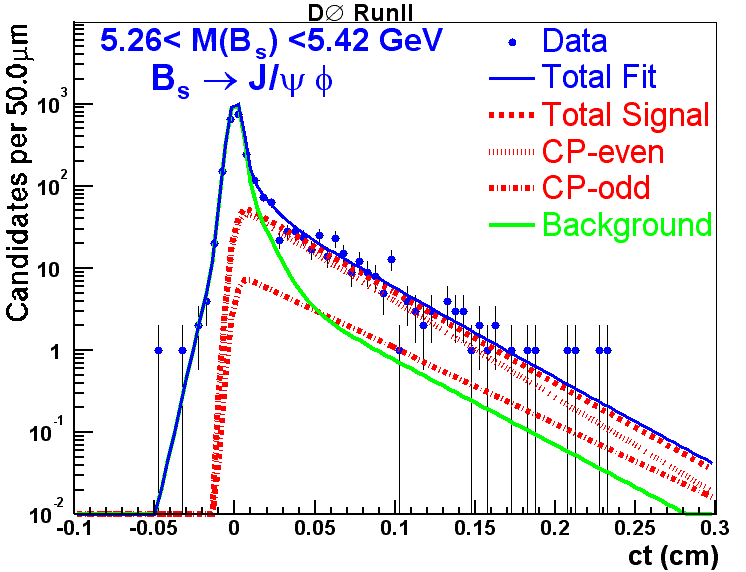
September 10, 2006
As every young person knows, the best way to find out what is inside a toy is to smash it. The harder you manage to hit, the more interesting it becomes. Particle physicists collide beams of subatomic particles moving almost with a speed of light, and look at the outcome. They found that particles are made of fundamental building blocks which they call quarks. At the Fermilab Tevatron Collider, they collide protons with antiprotons. What emanates from a collision is not just what was inside the proton. In an amazing manifestation of the famous Einstein's equation E=mc2, the kinetic energy of the colliding particles converts to the mass of many particles, some of them heavier than a proton. One such particle, about five times heavier than a proton, is the Bs meson. There are two particles by this name, they are mixtures of pairs of beauty (b) anti-quark and a strange quark, and a strange anti-quark and a b quark. According to the current theory, the two Bs mesons have well defined properties. One is slightly lighter than the other, and its average lifetime is about 10 percent smaller. They also have a feature that is not often talked about in everyday life, but it is a very important concept in particle physics: a CP symmetry. The CP operation converts a particle into an anti-particle and reverses its momentum. When this operation is applied to a Bs meson ("heavy" or "light"), the meson turns into itself. Physicists say that the heavy member of this doublet has a CP parity equal -1, or that it is in a CP-odd state, while its light partner is in a CP-even state. That means that the CP symmetry is conserved in the Bs system.

The Bs mesons live only a small fraction of a second. A Bs meson turns into a pair of ligher particles, a J/psi meson - a bound state of a charm quark and a charm anti-quark, and a phi meson - a bound state of a strange quark and a strange anti-quark. The time between a Bs meson production in a proton-antiproton collision and its decay into a (J/psi,phi) pair is so short that we measure it in picoseconds (a picosecond is a millionth of a millionth of a second). Fortunately, the Bs speed is such that the meson travels a detectable distance, measured in milimiters, before the decay. The J/psi and phi mesons, in turn, are very short lived, they quickly decay into a pair of muons, and a pair of kaons, respectively. These final four particles travel through the experimental apparatus and leave impulses along their trajectories that can be accurately measured.
The Dě ("D-Zero") collaboration has sifted through millions of proton-antiproton collisions recorded in the last two years, and found about 500 events of such Bs decays, both the light and heavy partners. By a careful analysis of the distribution of the directions of the muons and kaons, the group found that indeed the heavy brother appears to live longer, in agreement with the theory.

Here is a schematic view of how position of "hits in the Dě Silicon Microvertex Tracker from candidate tracks of the decay products of a Bs meson can be used to determine where (and hence when) the particle decays.
The atom smashing at Fermilab with continue for four more years. The accuracy of the measurement will improve. The accuracy of the theoretical prediction is also constantly improving. Our "Standard Model" of particles and their interactions is based on the observed relationships between various observations, of which the lifetime and mass difference of the Bs mesons is only a small part. A deviation of the measured lifetime difference from that predicted by the Standard Model may indicate the exciting possible effects of new physics. More details of this analysis can be found in an article to be published in Physical Review Letters.For further information contact Mr Avdhesh Chandra, TIFR, India, email: avdhesh@fnal.gov, Dr Shashi Dugad, TIFR, India, email: shashi@fnal.gov, and Dr. Daria Zieminska, Indiana University, email: daria@fnal.gov